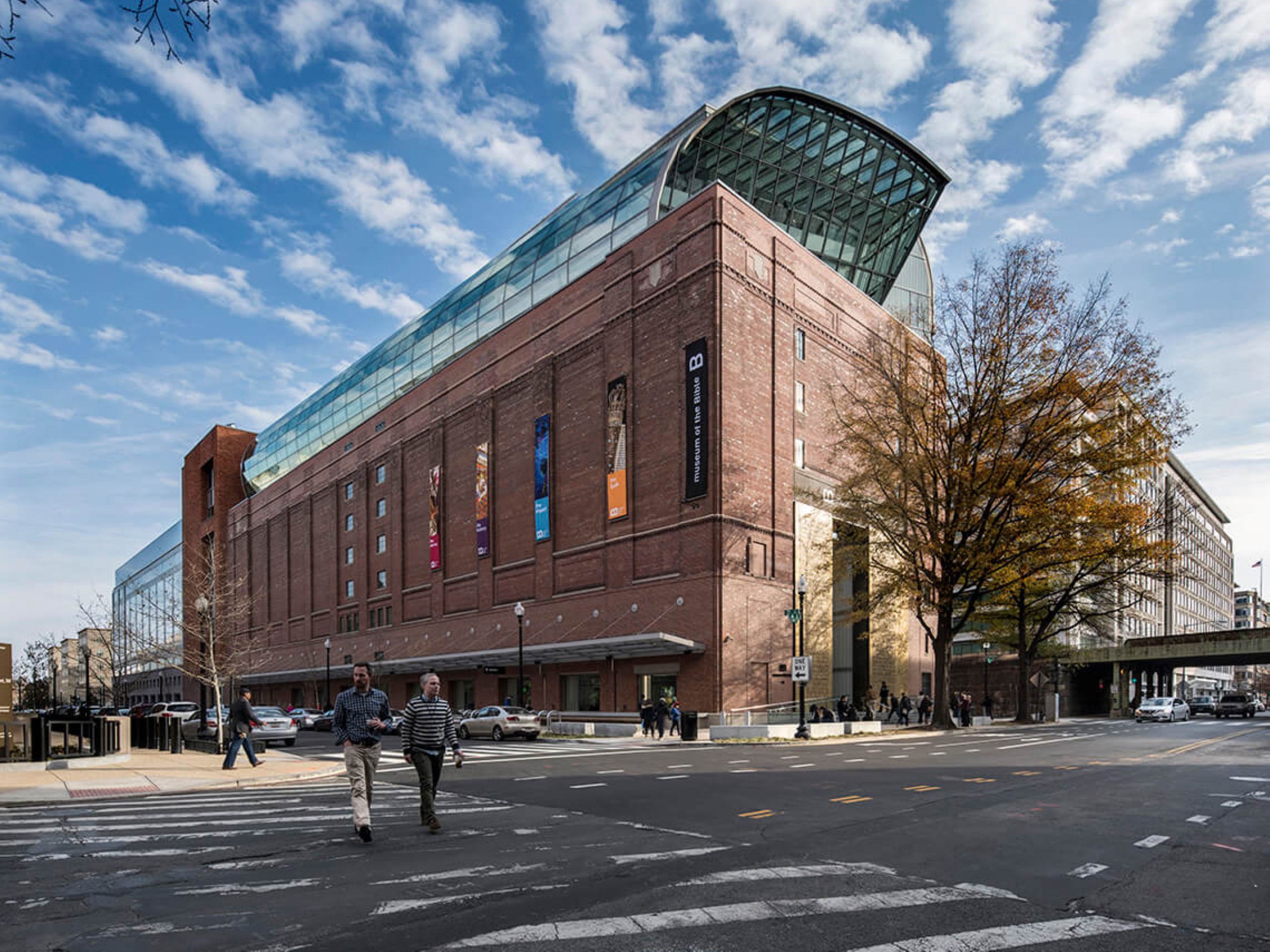The Museum of the Bible in Washington, D.C., is a non-profit museum dedicated to the Bible’s history, narrative, and impact. It features a range of exhibits, artifacts, and interactive displays. The museum aims to engage visitors with the Bible’s historical significance, cultural influence, and contemporary relevance, showcasing collections that include ancient manuscripts, rare Bibles, and historical texts. It is located near the National Mall and offers an immersive experience through its technologically advanced presentations and educational programs.
The client constructed the museum by destroying the seventh and eighth floors of the historic Terminal Refrigeration and Warehouse Company building erected in the 1920s. These floors were designed and reconstructed to provide gallery space for the museum, allowing for increased floor-to-ceiling heights. Both the rehabilitation of the existing structure and planned expansions posed several challenges for the client. To tackle these complexities, the architect selected F&R as the project’s Geotechnical Engineer-of-Record.
Early in the design process, our team faced several geotechnical challenges, including high groundwater levels on site, an adjacent WMATA structure (i.e., potentially damaging vibrations), soft soil deposits, undocumented fill soil, and adjacent historic structures. F&R addressed these issues by developing and executing a detailed subsurface exploration, the analysis of which would guide the project from the conceptual stages through the final design. The existing foundations were analyzed to determine their suitability for the proposed retrofit and construction. Our team provided recommendations that enabled the architect to design feasible facility additions and remain within budget.
Before construction, F&R provided a structural materials assessment of the building, including ground-penetrating radar, to identify reinforcing members in columns and slabs. Further testing of concrete cores, Windsor probe testing, and steel cup extraction and testing was conducted to ascertain material strengths.
During the project’s construction phases, F&R’s engineers and inspectors returned to the site to monitor foundation piles and perform construction administration services.

